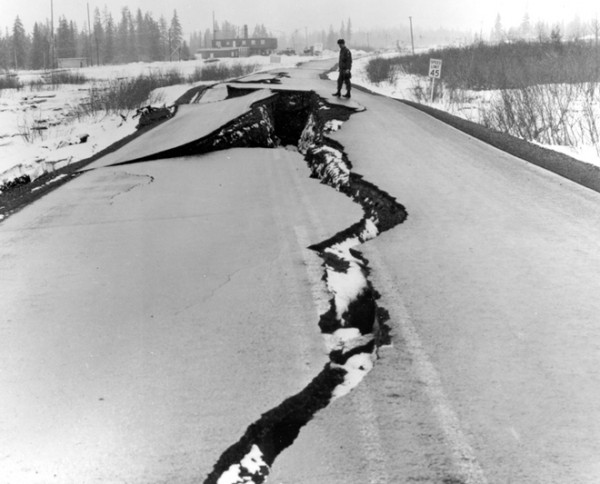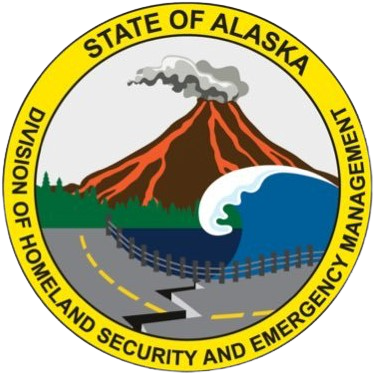THE 1964 GREAT ALASKA EARTHQUAKE HISTORY
 The 1964 Alaska Earthquake, also known as the Great Alaska Earthquake and the Good Friday Earthquake, was a megathrust quake that began at 5:36 P.M. AST on March 27, 1964. It had a moment magnitude of 9.2, making it the second largest earthquake on record. Lasting nearly three minutes, it was the most powerful recorded earthquake in U.S. and North American history. Ground fissures and failures caused major structural damage in several communities. Anchorage sustained great destruction or damage to many inadequately earthquake engineered houses, buildings, and infrastructure particularly in the several landslide zones along Knik Arm.
The 1964 Alaska Earthquake, also known as the Great Alaska Earthquake and the Good Friday Earthquake, was a megathrust quake that began at 5:36 P.M. AST on March 27, 1964. It had a moment magnitude of 9.2, making it the second largest earthquake on record. Lasting nearly three minutes, it was the most powerful recorded earthquake in U.S. and North American history. Ground fissures and failures caused major structural damage in several communities. Anchorage sustained great destruction or damage to many inadequately earthquake engineered houses, buildings, and infrastructure particularly in the several landslide zones along Knik Arm.
Two hundred miles southwest, some areas of coastline near Kodiak and Hinchinbrook Island were permanently raised by 30 feet. Southeast of Anchorage, areas around the head of Turnagain Arm, Girdwood was confined to the southern side of the Seward Highway when water rushed in and flooded or destroyed any buildings standing to the north of the highway. Girdwood and Portage dropped as much as 8 feet, requiring reconstruction and fill to raise the Seward Highway above the new high tide mark.
 In the Port of Valdez, a massive underwater landslide occurred, resulting in the deaths of 30 people between the collapse of the Valdez city harbor and docks, and inside the ship that was docked there at the time. Nearby, a 27-foot high tsunami destroyed the village of Chenega, killing 23 of the 68 people who lived there. The survivors out-ran the wave, climbing to high ground. Most coastal towns in the Prince William Sound, Kenai Peninsula, and Kodiak Island areas, especially the major ports of Seward, Whittier and Kodiak were heavily damaged by a
In the Port of Valdez, a massive underwater landslide occurred, resulting in the deaths of 30 people between the collapse of the Valdez city harbor and docks, and inside the ship that was docked there at the time. Nearby, a 27-foot high tsunami destroyed the village of Chenega, killing 23 of the 68 people who lived there. The survivors out-ran the wave, climbing to high ground. Most coastal towns in the Prince William Sound, Kenai Peninsula, and Kodiak Island areas, especially the major ports of Seward, Whittier and Kodiak were heavily damaged by a combination of seismic activity, subsidence, post-quake tsunamis and/or earthquake-caused fires. Near Cordova, the Million Dollar Bridge crossing the Copper River collapsed. Valdez was not totally destroyed, but after three years, the town relocated to higher ground 4 miles west of its original site.
combination of seismic activity, subsidence, post-quake tsunamis and/or earthquake-caused fires. Near Cordova, the Million Dollar Bridge crossing the Copper River collapsed. Valdez was not totally destroyed, but after three years, the town relocated to higher ground 4 miles west of its original site.
There were thousands of aftershocks for three weeks, following the main shock. In the first day alone, eleven major aftershocks were recorded with a magnitude greater than 6.2. Nine more occurred over the next three weeks. It was not until more than a year later that the aftershocks were no longer noticed.
